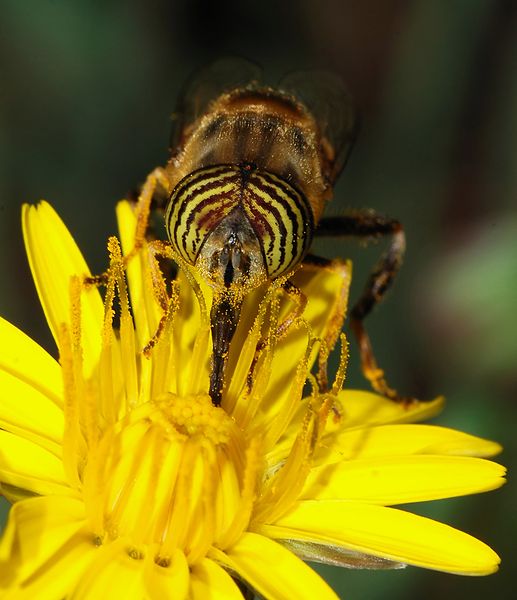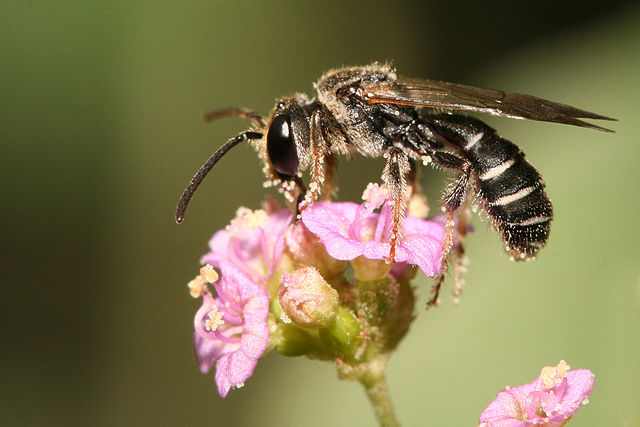Megachile rotundata, the alfalfa leafcutting bee, is a European bee that has been introduced to various regions around the world. As a solitary bee species, it does not build colonies or store honey, but is a very efficient pollinator of alfalfa, carrots, other vegetables, and some fruits. Because of this, farmers often use M. rotundata as a pollination aid by distributing M. rotundata prepupae around their crops. Each female constructs and provisions her own nest, which is built in old trees or log tunnels. Being a leafcutter bee, these nests are lined with cut leaves. These bees feed on pollen and nectar and display sexual dimorphism. This species has been known to bite and sting, but it poses no overall danger unless it is threatened or harmed, and its sting has been described as half as painful as a honey bee's.
Megachile rotundata
Heads-on view of female
Backside of female, showing such features as the thorax, abdomen, wings, and color of the body hairs
One predator of M. rotundata, Trichodes ornatus, on a yellow inflorescence
A pollinator is an animal that moves pollen from the male anther of a flower to the female stigma of a flower. This helps to bring about fertilization of the ovules in the flower by the male gametes from the pollen grains.
A syrphid fly (Eristalinus taeniops) pollinating a common hawkweed
Lipotriches sp. bee pollinating flowers
Honey bee pollinating a plum tree. Bees are the most effective insect pollinators.
An Australian painted lady feeding on nectar








